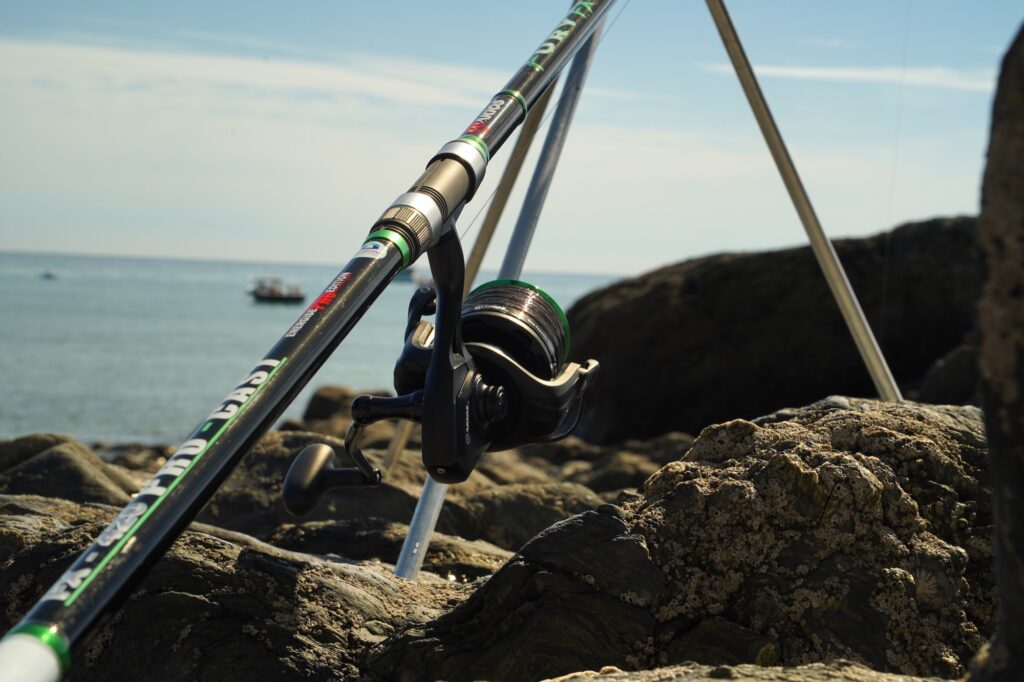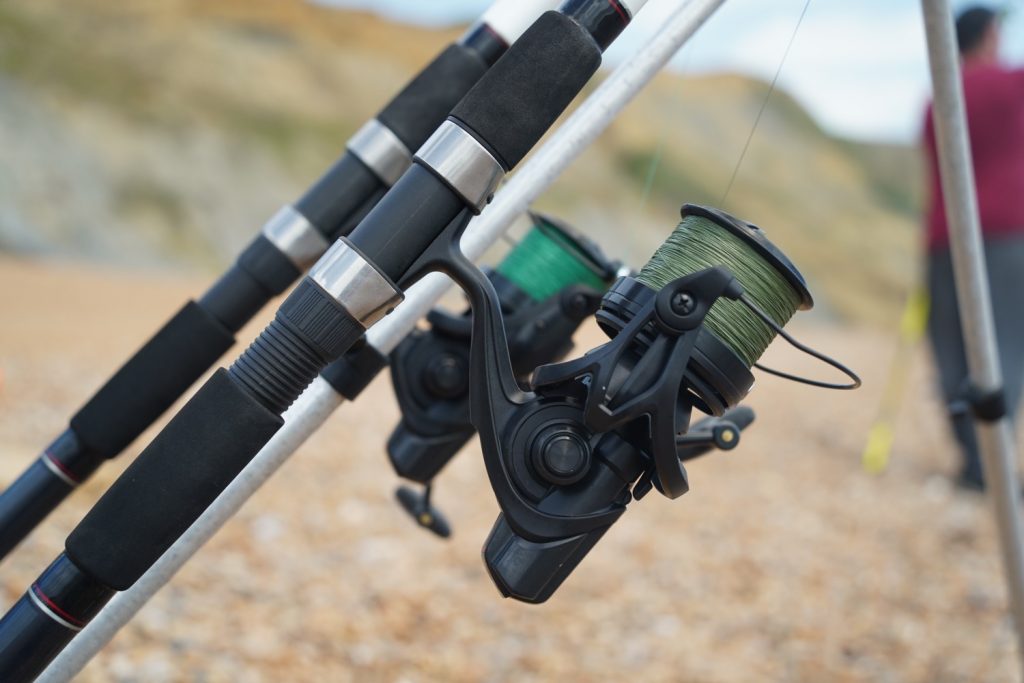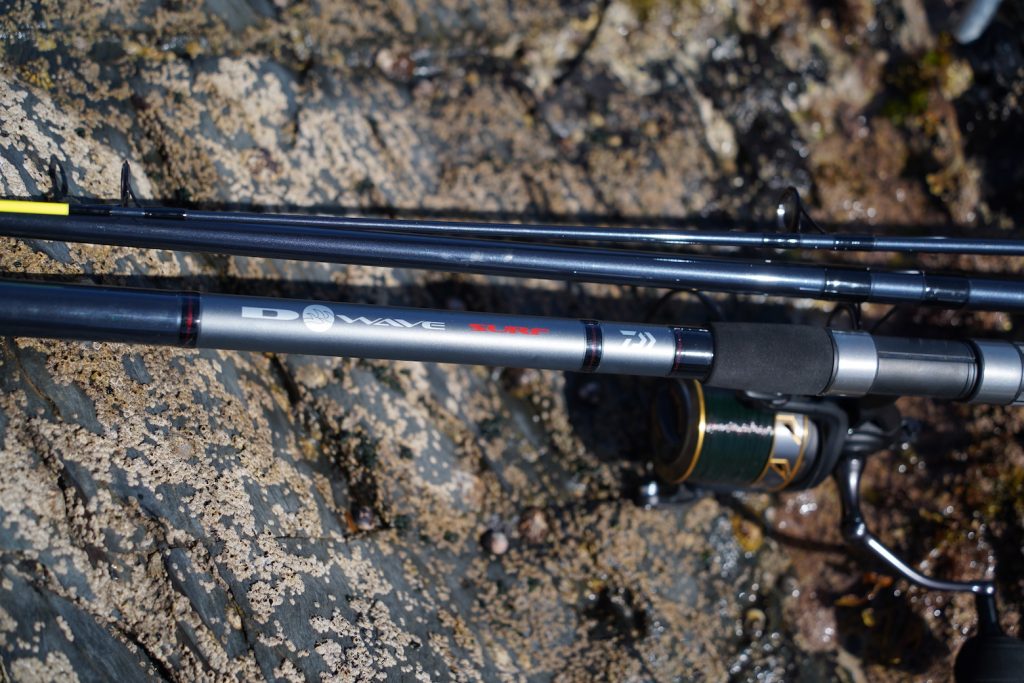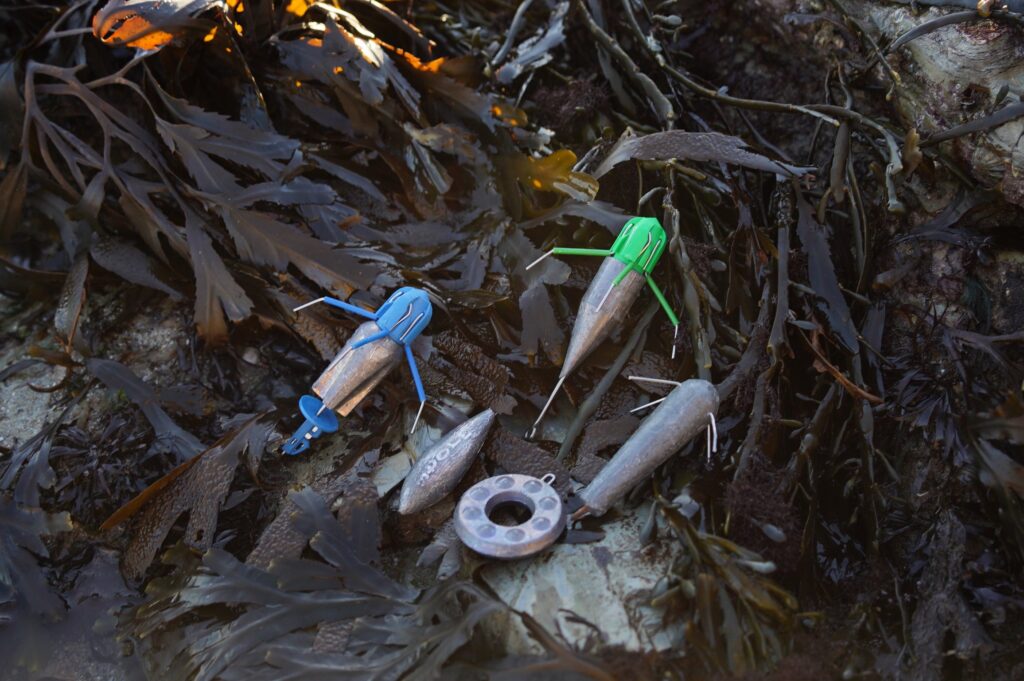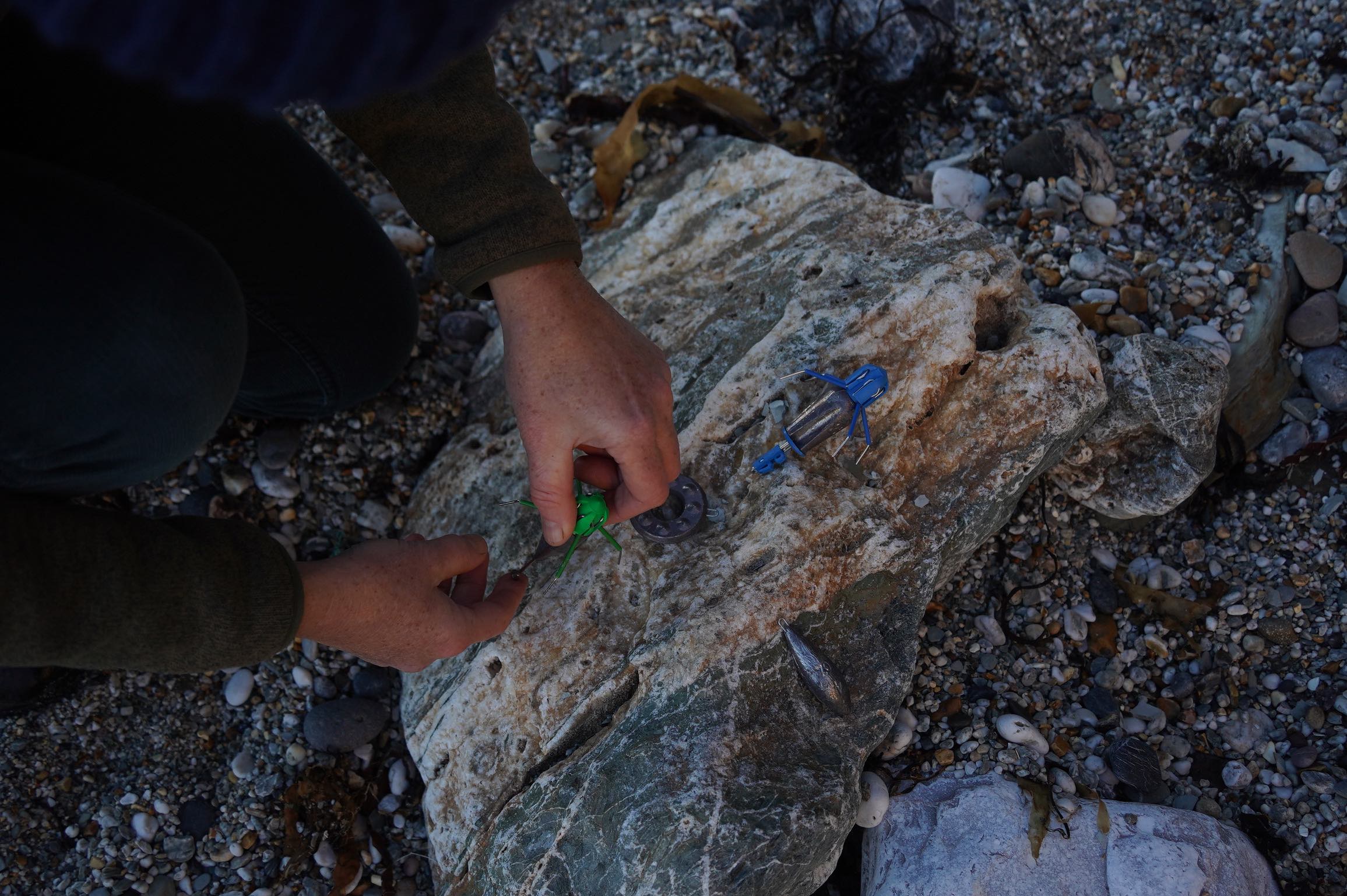
Beach Casting Guide
Could you survive an apocalypse with just a beach casting set up?
You turn on the news and see that there is an apocalypse in the UK. Supermarket shelves are bare. Everyone from London got on the train and went to France but protests meant they got stuck in the Euro tunnel! Food shortages are guaranteed… Now is not the time to blank. You need to catch fish and you’re going beach casting. How do you increase your chances? This series explains how we would go about doing it. We may not be the very best bait fishermen in the British Isles. But, it looks like you’re hunkered down with us now…
Beach casting is a shore fishing method for casting far, holding baits to the bottom and landing larger species. Fish like like conger, huss & rays. These are rods that are designed for ledgering. This means putting baits on the seabed, leaving them there and seeing what comes to take them. Beach casting works well even in places with murky water and low visibility, like the Bristol Channel or East coast of the midlands.
A huge number of the UK’s most common and desirable fish species are ‘demersal’. This means they live on the seabed. Many others spend at least some of their time feeding down there. Thankfully, we can catch an extraordinary range of species with beach-casting tackle.
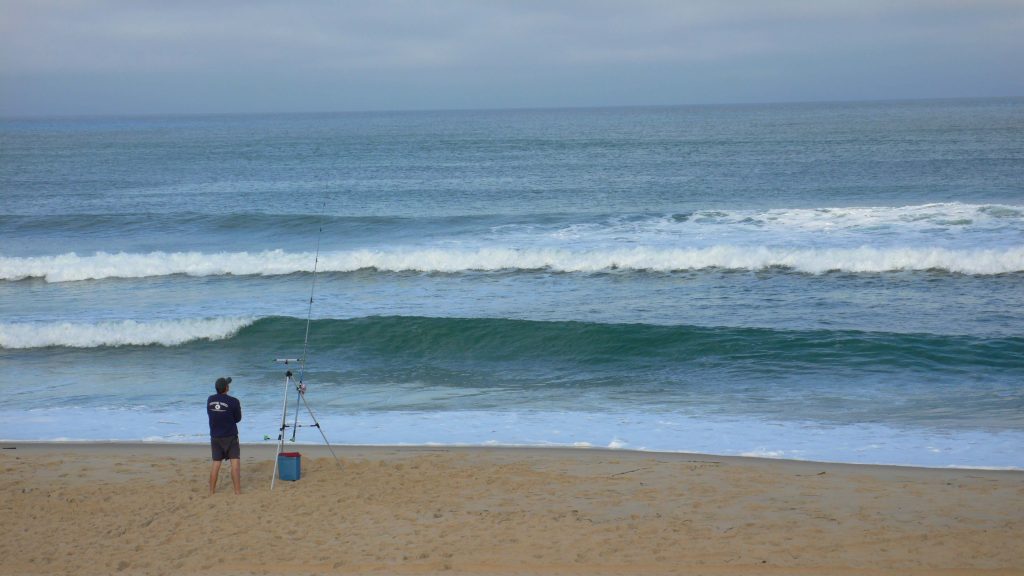
1. Choosing a beach casting rod
Most anglers underestimate the numbers of fish that feed very close to their feet. However, in general, it’s useful to have a long cast. The angler with a long cast can always fish close in. Casting just beyond the breakers for bass or into the central gulleys of estuaries for cod. All these things can require very long casting distances.
It’s also satisfying and useful to place baits exactly where you want them. This level of accuracy is useful if you want to put bait on a sandy patch surrounded by rough ground. To achieve this, you need fairly decent beach casting gear (with a rod and reel likely costing £120 minimum). Some people will buy cheaper kits and won’t survive the first week of the apocalypse. But don’t worry; they’ll be useful for shark bait later!
Guide to choosing your beach caster

2. Choosing a beach casting reel
Most beach casting reels on the market could be of better quality… This is because the UK sea fishing market is a race to the bottom on price. Companies at the low end compete to bring prices as low as possible. As you know, the average sea angler does not value quality; they value low cost. Did you know some tackle brands release two versions of the same reel? One version of a reel for the UK market. Then, another, higher-quality version for international markets!
There are good options out there, but you don’t want to just grab whatever looks decent without knowing its reputation. This reel needs to reliably crank in 8oz leads. We want decent line lay to maximise casting distance and avoid tangles in the middle of the night too. We can’t be dealing with something unreliable.
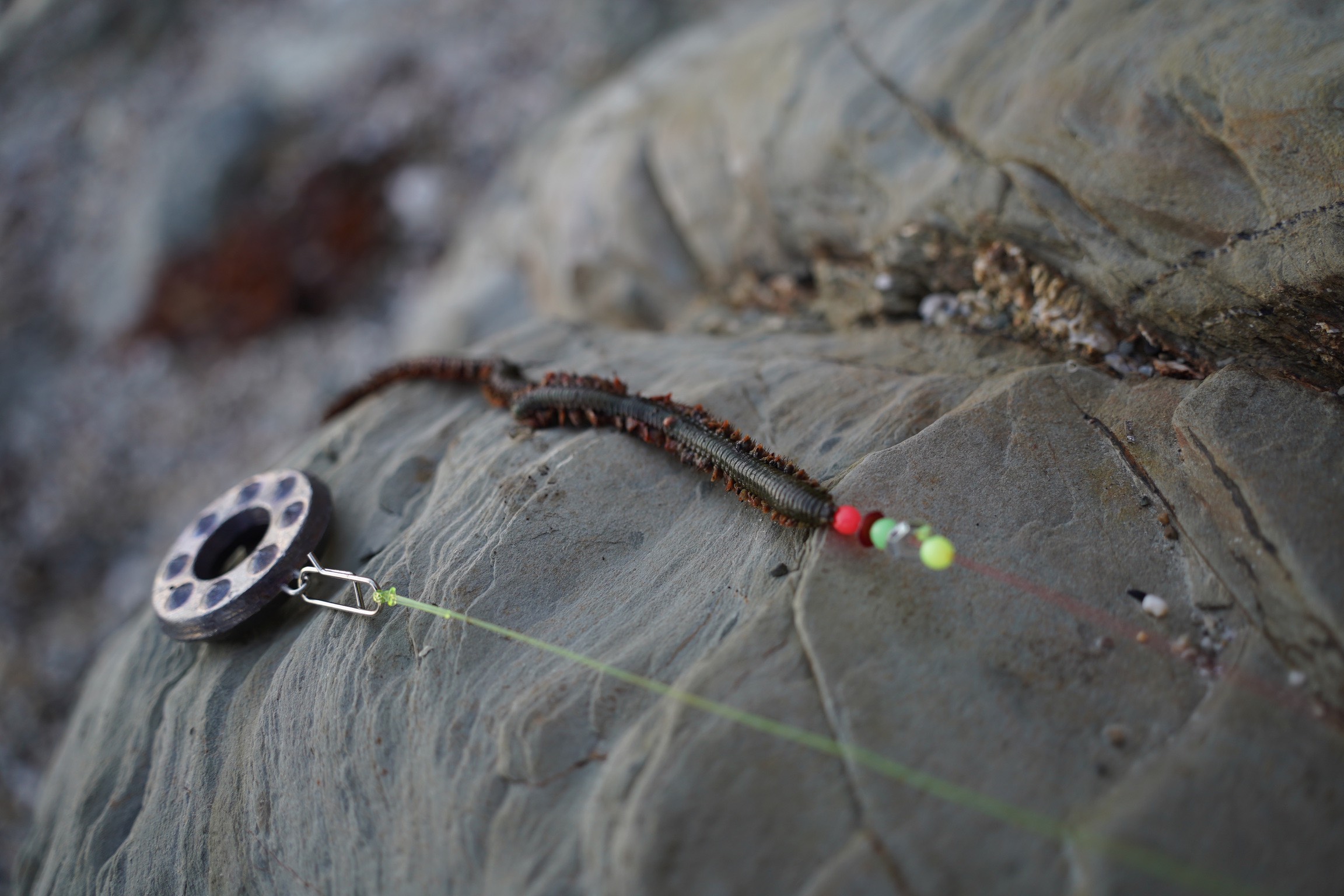
3. Find the best sea fishing line
Always replace line that comes with reels
We still need to finish testing the various sea fishing lines, but this article covers where we’re up to. There are a few key things to know about line. Firstly, for beginners, it’s often worth swapping out the line that comes pre-loaded onto a rod and reel combo. Typically it makes sense to replace it with 20-25lb mono, depending on the ground you fish. Then you need to use shockleader to prevent your line snapping during the cast. This is a common beginner problem – the snapping sound is a common one on harbours across the country!
Braid can be advantageous
If you need a long cast and want better bite detection, braid is a level up! You don’t need fancy braid for beach casting. You want a line with a fairly high diameter for the abrasion resistance. Our top tip for braid is don’t buy it on Amazon unless you know exactly what you’re looking for. There’s some bad stuff out there.
Guide to choosing mainline & shockleader
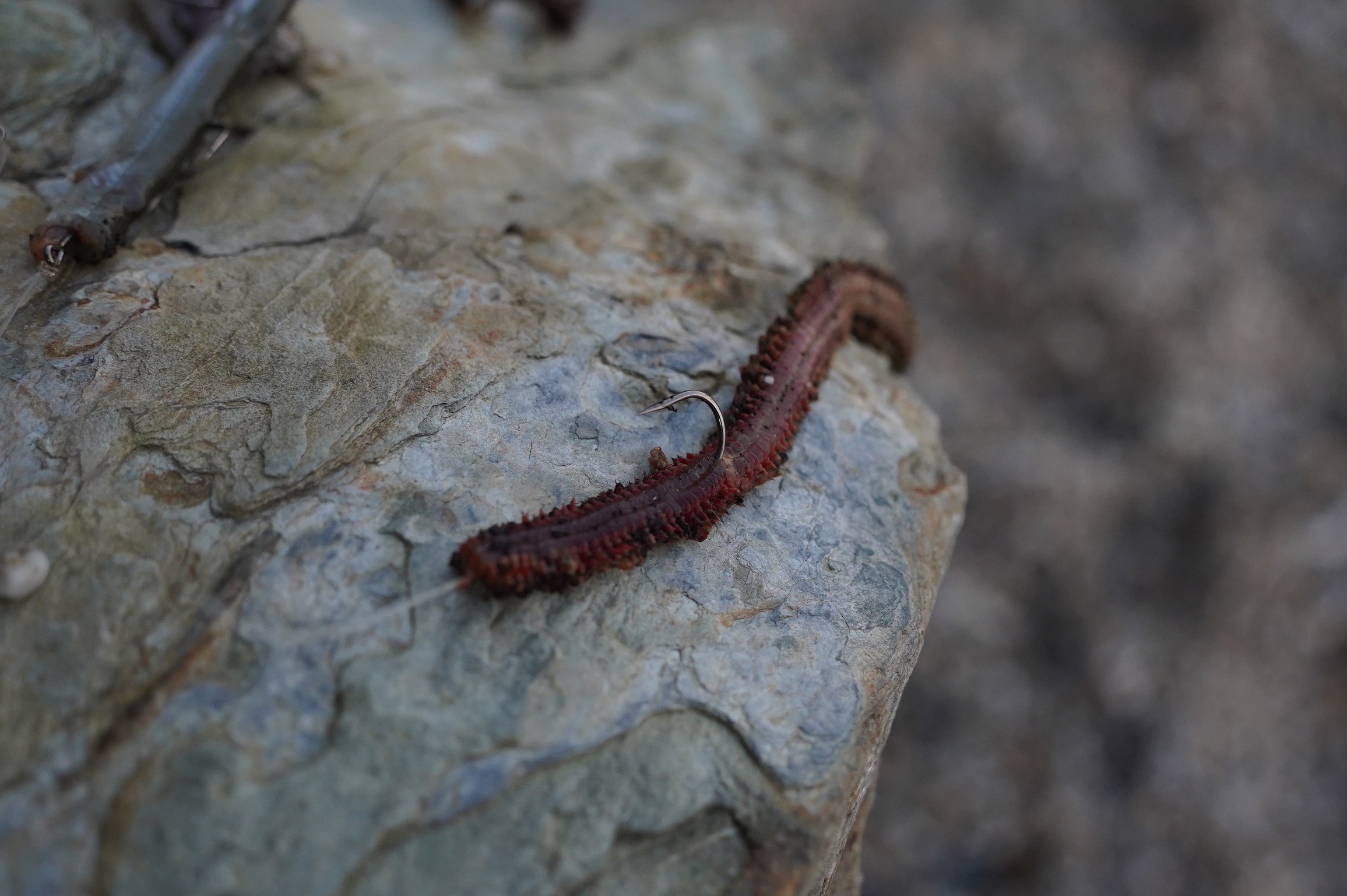
3. Sea fishing hooks
Some may believe that a hook is just a hook, but the reality is that there are several different types. Using the right ones for the job will increase your chances of catching fish. For instance, using a thick gauge hook with worm bait could cause the worm to come off. This leaves you fishing without anything juicy on your line! On the other hand, if you use a fine hook over rough ground and hook a huss or conger, they could straighten your hook. Therefore, it’s worth having a few different types of hooks. These should match your target species and the bait you plan to use.
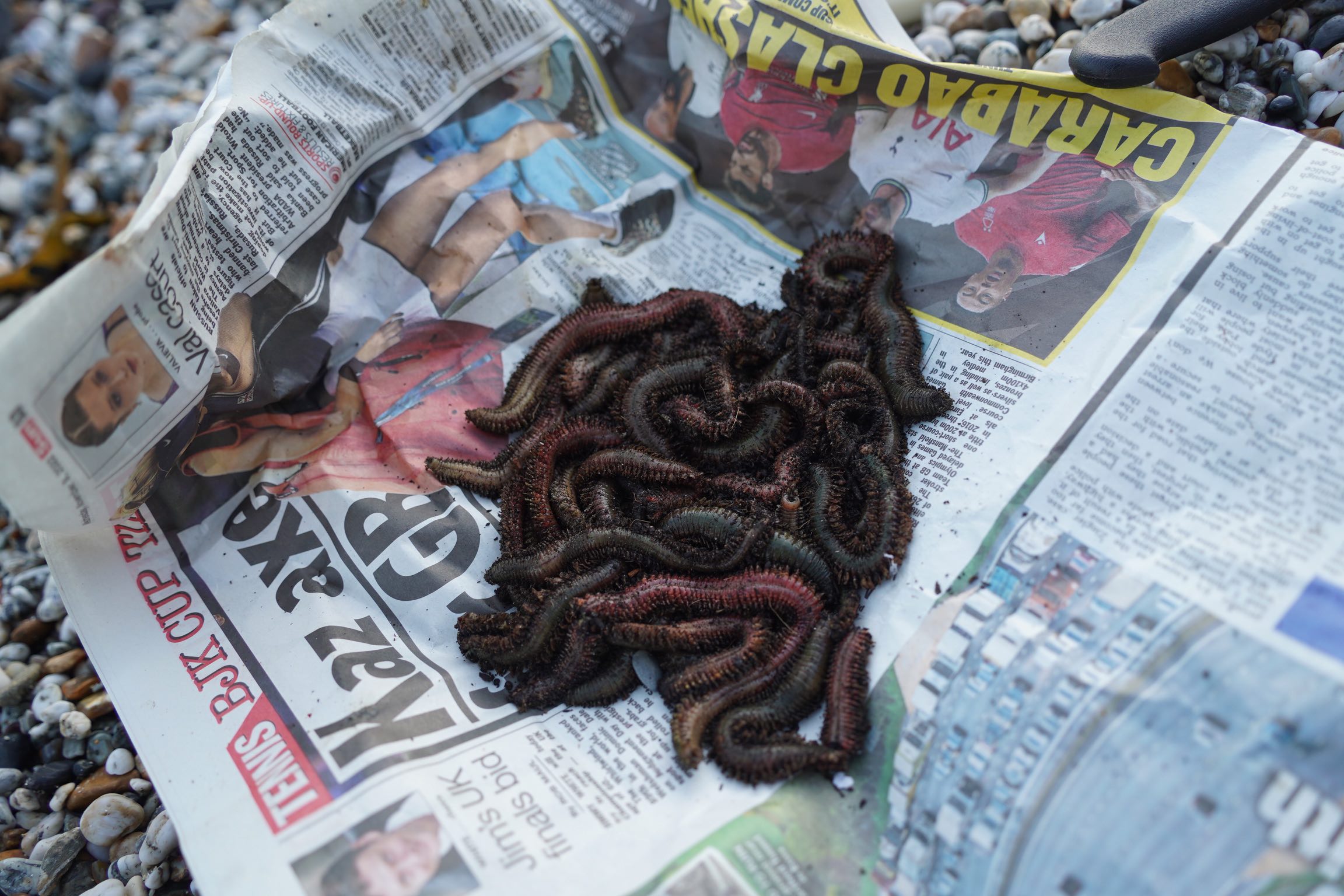
4. Hunt down the best sea fishing baits
Certain species have fairly established preferences for specific baits. It’s also good to match baits to what fish are feeding on in the area you’re fishing. This can be worked out somewhat by the season. If you use baiting elastic or tip your baits off with something firm like squid, your bait will stay on the hook. This helps with crabs that claw at baits, particularly in the southwest. Imagine casting out and fishing for 20 minutes. If your bait isn’t on the hook for 15 minutes, you weren’t fishing for 20 minutes! This reduces your chances a lot. If you consume your catch, you can discover their diet when you gut the fish. This can be useful knowledge.
Guide to sea fishing baits & when to use each
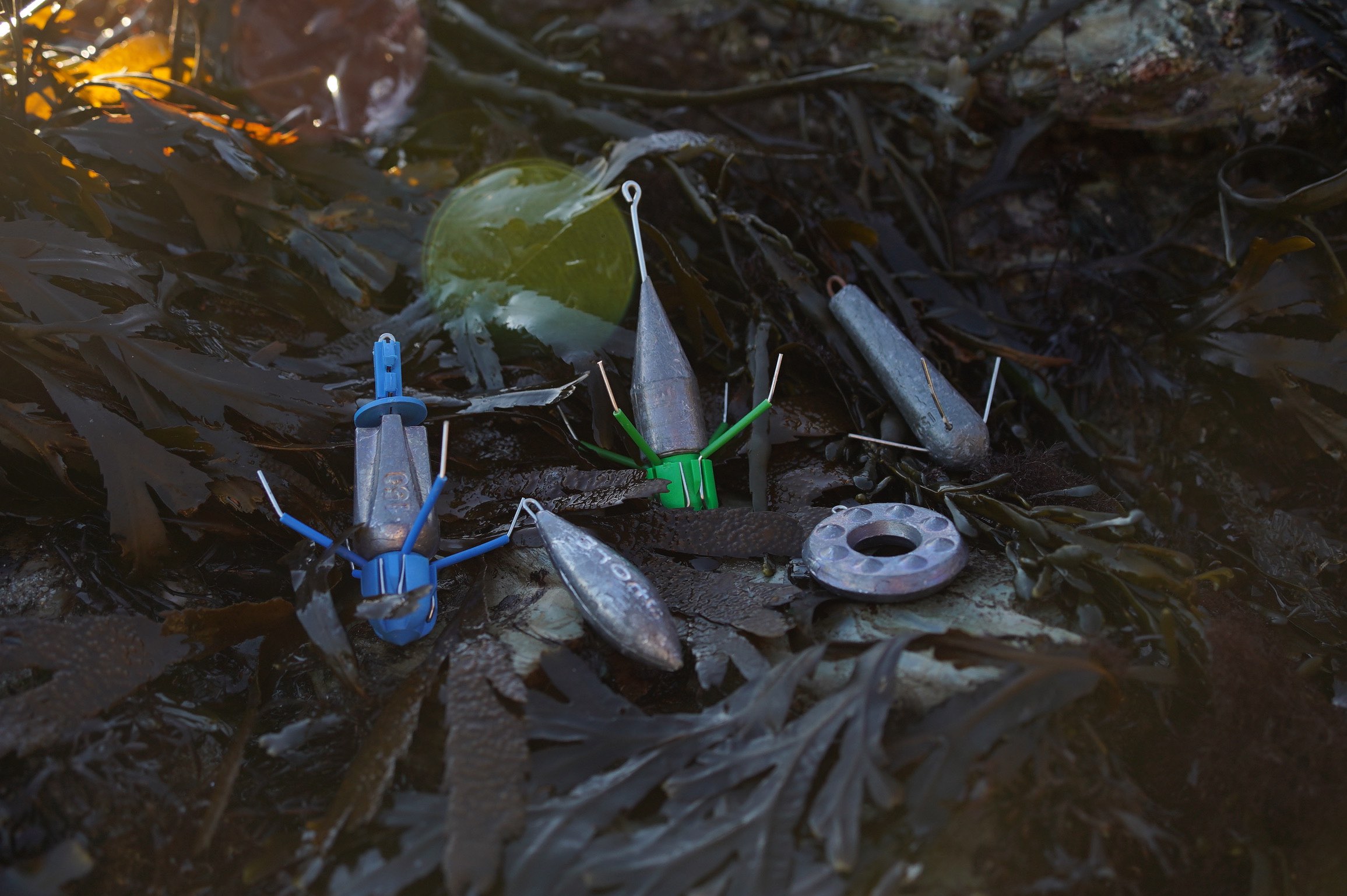
Sea fishing leads & when to use them
Sea fishing weights come in a few varieties and are designed for fishing over different types of ground. The circular weight above is designed to grip the bottom but also stir up the sea bed on a drift. The torpedo shaped weight to the left of it is designed to minimise water resistance when mackerel feathering or trolling. The others all have specific purposes, and it’s important to know which type to use.
What fish species can I catch while beach fishing in the UK?
The most commonly caught fish by beach fishermen in the UK are whiting and dogfish. Neither of these fish is very commercially important. Whiting are mostly small – a good fish is 1lb in weight. Dogfish are not very valuable and are marketed by fishmongers as ‘rock salmon’ in an attempt to make them seem more appealing. Cod and bass are the two most popular species to catch. Bass numbers have risen from pitiful lows in the south of the UK and as of 2023 feel relatively abundant. Cod disappeared in the south between 2017-2021, but some have been caught in 2022 by skippers and 2023 had a few more fish than previous years at Chisel beach in Dorset, but still pretty thin.
The most exciting big fish that you’re likely to catch are rays, conger and bull huss or other shark species. There are tons of other sea fish species you could catch. I’ve caught over 40 species in the UK and some people have had many more.
Beach Casting Tips
Use Navionics to find deep water shore fishing marks near you
Firstly, deep water only sometimes improves fishing. You can catch Bass and flatfish over shallow ground, sometimes just a few feet deep. However, many of the best shorefishing marks for species like ray, conger, and big pollack involve casting straight into deep water. Consider Chesil Beach as an example. Chesil Beach is one of the UK’s most famous beach fishing marks. Part of its productivity stems from the beach’s quick shelving into deeper water. Not too far offshore, the water becomes very deep. This proximity means larger fish can be caught from the shore.
Navionics is a tool that shows you what underwater features there are in an area. When the lines on the map are close together, it means the water changes depth there. You can click anywhere on the map and see how deep the water is there. This is an invaluable tool for the angler seeking deep water shore fishing marks.
When shorefishing for conger, chum the water
Conger are one of the few species that are still abundant in the UK. In interviews we’ve had with charter boat skippers, this species pops up as one that is a reliable catch. Especially the strap conger (under 25lb) that have not yet settled down in a wreck somewhere. These smaller conger are still roaming the open seas, so are easier to catch.
Conger live parts of their lives in water 3km deep. No light reaches there, so the fish depend on an extraordinary sense of smell. They also rely on other abilities that nobody fully understands. If you’re night fishing for a session lasting more than a couple of hours, chumming the water can work well. You can use bits of fish head and fish guts for this purpose. This method will attract conger travelling from considerable distances, enhancing your catch rate. This will also draw in other species, including small fish. These small fish can sometimes attract bass as well.
In winter, hand warmers useful for getting in longer sessions.
Fishing for extended periods enhances your chances of catching fish. In British wintertime, the weather often limits our fishing duration. Commitment is necessary for night fishing in the UK in January. A hot flask, hand warmers, and fingerless gloves assist in enduring those lengthy winter nights. The effort is worthwhile, as a frozen beach in the middle of the night offers unmatched tranquillity.
Hold conger by the gills. Hold dogfish by the head and tail at the same time.
Certain species can be held in ways that facilitate quicker unhooking or release. You can lift Conger by the entrance to the gills. Their bodies are firm enough to support their weight in this area. With dogfish, one hand can grab the head and the tail. These fish are hyper-flexible. If you’ve tried to grab a dogfish by the neck, you’ll know it can wrap its tail around your arm in a serpentine grip! Bass, on the other hand, are best carried with a very firm grip. Place your thumb and forefinger on the lower jaw, and use a second hand to support the body. A wet towel can help you grip fish without getting spiked. The moisture in the towel also protects the delicate skin of many species.
The cheap combo rod will probably only last you a few months and the reel maybe a bit longer.
Unfortunately the UK sea fishing market has a lot of very cheap kit that doesn’t work well and has a very short life by the water. Some major fishing manufacturers actually know that the UK market is not as discerning as other international markets and make lower quality products especially for us! The solution is of course to buy some decent kit rather than spending £60 on a rod, reel and line. It does cost about £100 for a basic kit that actually works.
Going on guided fishing trips can drastically reduce the learning curve
Let’s face it, we anglers are a notoriously proud bunch. In some other countries, going to a tackle shop to pay for a guided fishing trip is as normal as anything. An experienced person showing you how they do things in person is extremely useful. It’s also a great way to support the UK’s sport fishing industry. This support can help promote more sustainable fishing in the UK and give anglers more of a voice.
We thoroughly recommend that anyone, regardless of skill level or experience, consider an angling guide if possible. I’m sure I’m not the only one who has made the mistake of assuming that my knowledge from home would be enough to find the fish on trips abroad.
Join an angling club or find people on Facebook groups for free guided fishing trips. There, you may meet people who provide local knowledge and improve your angling.
Most sandy beaches are most productive after a good onshore blow
Heavy wave action during onshore blows churns up the seabed and flings all kind of morsels into a suspended flight. After the wrath of the seas is over, bodies and carcasses of myriad creatures are left swaying gently on the seabed. This is a great time to catch big bass and all kinds of other species that move in to clean up the carnage.
The first person to place a glittering bead above a hook must have felt like they were creating a vajazzle.
Is the use of glittery beads in fishing a sign of repressed urges coming out in peculiar ways? Perhaps, but it does attract species like Plaice that have a strong attraction to sparkle.
Fish love gulleys to feed, as its a natural holding place for food and slightly deeper water
When beach fishing, knowing what underwater features are at a mark pays dividends. For instance, a beach mark may have rough ground, gulleys, drop-offs, or areas where the ground goes from sandy to stoney. All of these are likely fish-holding features. Rocky gulleys, for example – channels with deeper water between two rocks – are home to many small fish species and crabs. All those creatures kids catch in their nets when rock pooling. This means those areas are rich food sources for larger fish. You can find these areas by visiting marks on big, low tides and fishing the tide on the push.
Knowing where there are deeper channels in an estuary tells you where to place a bait for cod. They often push up those channels with the tide as it pushes in. For bass, finding rocky gulleys where the sea has carved out strips of deeper water between rocks increases your odds. These make for great ambushing spots for bass. They are home to all the deliciously crunchy and slippery morsels that live in the intertidal zone. Everything you’d see in a rock poolers bucket is up for grabs.
Another more involved method is to go snorkelling or freediving! Any takers!?
Big tag ends are not good with worm baits, but help fish baits stay on the hook.
If you leave a long strand of worm hanging below your hook, fish are going to bite that off. They may not take the hook. However, with fish baits leaving a slightly longer tag end can help you get a stronger hook hold on the bait, preventing it from falling off.
Baiting elastic helps to streamline baits
Baiting elastic is useful for holding baits to your hooks. It stops crabs being able to pull your baits apart so quickly. In certain marks at certain times of year this is a real problem. Another lesser-known advantage of baiting elastic is that it makes your baits more streamlined, so you can cast further. If it sounds like a faff – at least we’re not shaving our legs like cyclists!
Don’t use a beach caster for mackerel fishing
Many anglers will use a beach caster for throwing out mackerel feathers. Certainly the method is effective, as you are able to cast a long way and seek out the fish. It’s also cost effective as you can use the same rod for both mackerel fishing and ledgering with baits. However, beach casters are heavy and do tire your arms out after a while. They’re just not as fun to catch mackerel on as a light spinning rod. We recommend targeting mackerel with lighter gear and not buying an ‘all rounder’ rod that attempts to do everything.
If you’re going to be doing a lot of feathering and spinning I also wouldn’t recommend a telescopic rod. They tend to be quite a bit heavier than a regular rod.
For daytime fishing, a rising tide or a high tide are the best times to fish
Most fish are more plentiful inshore when the tide is pushing in. This is partly because the fish follow baitfish inshore as they are pushed in by the tide. Fishing when the tide is going from mid to low is rarely the best decision in most UK marks. There are exceptions though, particularly for bass.
The best moon for fishing is a new moon or full moon
The highest and lowest tides through the year are on the day of a new moon +3 days and also on a full moon +3 days.
On a new moon or full moon you have about 4 days when the tidal range is larger. This means the tide comes in further than usual and goes out much further. I have had dreams where the tide has gone out so far my friends and I can walk around our local bay and see every underwater rock or gulley. In some estuaries and beach marks, the areas of intertidal zone are huge.
Fishing tends to be very good on these spring high tides. They reliably bring in species like mackerel and bass – but a huge number of species are more easily caught on big springs.
Use rolling leads to find gulleys in a moving tide
If you’re fishing in an estuary or a beach with a lot of water movement from the tide, you can use rolling leads to find gulleys for you. The lead will roll until it reaches a pocket of deeper water. It may then stop rolling. Even if it doesn’t the lead will move towards gulleys more often than you will cast into a gully by chance!
Gullies are fish holding features. Rolling leads do increase tangles, so rigs with fewer hooks and short traces are best. I wouldn’t recommend this for a beginner because tangles in your terminal tackle are likely.
Set up a good distance from the sea when fishing at night
Setting up your tripod further away from the sea means you’ll have more time before you have to move. In some marks, you do have to move a lot. Sea surges are also real and hazardous when fishing alone, especially at night. Occasionally, you do get a random freak surge and the sea comes in much further than usual. It’s safer to be sat a bit further inland than you think is necessary to avoid this.
Where there are lots of footprints is usually the HT line
You can often spot the high tide line by the number of foot prints on the beach. There are a lot more footprints just above the tide line than there are below it.
You can also use the tool to identify areas with rough ground for targeting Bull Huss etc. Or, you can use Navionics to find areas of sandy ground for targeting fish like Plaice.
Do not cast straight out into a running tide
If you cast straight out into water moving to your left, the water will carry your line a bit creating a bow in the line. If you cast at an angle in the direction the line is bowing, you can remove some of this slack line. This gives you better bite detection.
Change bait often and have pre-rigged baits ready
Crabs, small whiting, and little gobies etc. often quickly tear baits to shreds at many marks. In these cases, particularly when you change baits frequently, having baits pre-rigged on hooks proves useful. This approach minimises the time spent without a bait in the water. This strategy makes a significant difference. That’s why competition anglers, similar to Formula One drivers, concentrate on reducing these wait times!
Experiment with fishing different depths and locations until you find the fish
Sometimes the fish just aren’t where we expect them to be. It pays to cast all over the place into different areas to find the fish. Sometimes this means fishing much shallower or deeper than expect to.
Garfish as a rough guide will be around 4ft to 10ft under the water. Mackerel and pollock as a rough guide will be half way up
Garfish and mackerel classify as pelagic fish. Unlike wrasse, which stay in one area most of the time, pelagic fish species roam the open seas. Garfish feed in the very top areas of the water. Their bills restrict them from eating much of what lives further down the water column. On the other hand, mackerel can be at any depth from the surface to the seabed. When float fishing, it’s a good move to search the middle of the water column with baits.
If you’re float fishing, you can setup the stopknot depth to around 10ft and see what happens. If nothing happens after 10 to 20 minutes raise or lower the depth until you find the fish.
The fish are not always deeper out!
A common myth pervades harbour walls around the country, suggesting that the fish are present but just too far out to catch. Sometimes this holds true. However, more often than not, the fish are actually around your feet, and people cast over them! At your average harbour wall in the UK, species like wrasse and conger are likely at your feet. They might even be inside the harbour wall itself if there are underground pipes. You don’t always need a long cast to catch these fish, even the very big ones. A short cast often proves to be the best, especially at night. During these hours, fish will come into shallow water to feed under the cover of darkness.
Pay attention to other anglers rigs if you’re not catching
Sometimes another angler will catch more than you to the point that it seems unbelievable. Strange things do happen in angling. I’ve been on trips when a similarly skilled friend has either outfished me or been outfished by a factor of ten. Often, the cause is the use of the wrong hook size or wrong bait for the day. Then of course, there is the role of luck!
Don’t feather after dark, mackerel don’t hit them at night
Mackerel are site feeders and are best caught in daytime. Casting feathers at night is not a good way to catch fish. Baited feathers can give success with members of the cod family, though.
If you’re feathering and not catching change your rig
Mackerel are pelagic, they come and go. If they’re not there and nobody is catching despite having a good casting distance and searching different depths, it’s time to try something else. You can always let other anglers keep fishing and use them as an indicator for when the mackerel have arrived! When the mackerel aren’t around, whack out a bait on the bottom and see what’s around.
I have bitten off 90% of a soft plastic and fished with the tail end when I wanted to catch a greater sandeel. The lance is also known as a greater sandeel and was part of a species hunt. Experimentation can yield results. Surprisingly, it’s necessary most of the time to catch anything at all! You have nothing to lose.
Many beaches may look featureless at first glance this is rarely the case
There are often gullies and channels carved out by the water where dislodged muscles and clams with accumulate and draw in fish. Big storms can completely change the structure of a beach. Casting into gullies will increase your catch rate.
Seeing your rod tips in the dark is essential when sea fishing at night time
Glow in the dark rod tips are useful, because they allow you to detect bites at night. The best beach fishing in the UK is often had at night time, so rods with glowing tips are useful. You can always attach your own glow stick to your rod top to make bites visible.
Casting over rough ground requires a stronger outfit
Rough ground means rocks, weed, kelp and snaggy structure. You can’t avoid it because so many species live in the rough stuff. Mainlines of 30lb and with heavy duty reels and rods can help you to pull rigs through this heavy ground. A stiffer rod tip will also help when pulling through snags.
Shallow water beaches are mainly good for catching bass and flatfish
Other species will come inshore at shallow beaches but the most common catches by far in shallower waters are bass and flatfish. These spots also tend to fish much better at night.
You can remove weed from your line by hitting your rod with your palm or twitching your rod rapidly
Weed getting caught on your line is a common problem and there are faster and slower ways of dealing with it. You can often get it off with sharp rod movements or by hitting your rod. Then you can carry on retrieving.
Local knowledge is invaluable
FISHMAG is trying to bring together guides to create useful guides for beginners wherever they happen to be in the country. Local knowledge is pretty much 80% of what fishing is. The easiest hack for catching fish is to go with somebody that’s already made all the beginners mistakes.
A tripod with a sliding butt cup can hold your rod higher above weed
If you can get your rod tip higher, less line will be near the surface of the water. This is because the angle of your line will be steeper. This can be achieved more easily if your tripod has a sliding butt cup. Feel free to ask for one for Christmas. You can adjust it to get the rod held higher on your tripod.
You can understand new ground by casting out a hookless lead weight first
Cast a weight with no hook and retrieve it slowly over the bottom. With a sensitive rod, you’ll get a feel for the type of ground you’re fishing over. For instance, you’ll feel when you run into a weed area, encounter a major snag, or a steep drop off.
When reeling in heavy leads, try to remove strain from the reel
If you retrieve some of the slack without first lifting the rod and then lowering it, your reel works harder. When you catch a big fish or a big clump of weed, beginners might retrieve without first lifting the rod. This tires your reels out more quickly.
Thanks for reading! Check out our other articles…
Your attention is appreciated in a time of fast information. This was slow in comparison but hopefully more instructive. Below are more such articles.
Beachcasting rods | Find the best
Beachcasting rods | Find the best A beachcasting rod is specifically designed for casting from…
The best beach casting reels, and how to find yours
The best beach casting reels, and how to find yours Beach casting reels have to…
Sea fishing starter kit | beginners set up
Sea fishing starter kit | beginners set up First, I will explain the three main…
Sea fishing weights
Sea fishing weights explained Let’s look at each type of sea fishing weight and some…

